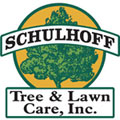Colorado is known for some picture-perfect trees, but in some cases, the trees on your property may not be looking well. Tree diseases come in many forms, but some of the most obvious may be seen with strange tree growths. Tree growths come in many shapes and sizes. Each growth presents a different set of problems you should take care of.
Learn about tree problems, treatment options for trees, and how long-term growth can result in major issues for trees on your property.
1. Horned Oak Galls
If you have an oak tree on your property, look for small ball-shaped growths on the tree known as horned oak galls. The horned part of the name refers to the small horn-like wasps that protrude out of the growth. A single gall may have dozens of wasps sticking out. The presence of the wasp is typically an indicator of how long the growth has been there.
If you see the oak gall without any horns, then it likely newly grown. Over time, the horned oak gall will not kill a tree, but it can prevent the growth of leaves and dramatically change the amount of shade an oak tree provides.
A tree pruning service can focus specifically on the galls and help prevent the spread of them through multiple branches.
2. Tree Burls
If trees on your property look like they have grown large warts, then the tree most likely has a burl growing. The burl growth is not a disease but acts as a mutation of a tree. Instead of the circular wood grain pattern, you would see on a regular tree trunk, a burl features wavy, swirling, and intricate patterns. The outside bark is rough and bumpy.
Overall, tree burls will change the visual of the tree, but should not impact the overall health. You may want tree burls removed for two reasons. The first is to change the visual look of your tree. Tree burls can be a distraction to beautiful landscaping.
Another reason to remove burls is when growth occurs high up on a tree. The burls can weigh down on branches, increasing the chances of a fallen branch. Burl growth can also change the direction a tree grows.
3. Black Knot
Several species of cherry trees grow in Colorado and one of the main growths associated with the tree is a black knot. Black knot is similar to a burl but makes the tree look like sections were lit on fire and burned black. The black knot on a tree should not present any problems but may ooze a sticky substance that falls to your lawn.
One of the biggest issues with the black knot is when the growth cracks open. The cracks can make your tree vulnerable to fungi and insects. Easy access to the trunk can severely impact the growth of a tree and may lead to decay.
4. Witch’s Broom
One of the weird growth patterns you will see in pine trees is known as a witch’s broom. The growth occurs when pine bunches together and looks like a giant broom, similar to what a witch would ride on. The large bunch can grow on any part of the pine tree and is clearly different from the rest of the tree.
The main cause of a witch’s broom is typically from either insects or fungi. The invasion on the tree may have forced pine needle growth into one section and proper nutrients were blocked off. The witch’s broom can be chopped off to help eliminate fungi, but a full tree inspection can determine where the problem started and the best solution for the tree’s health.
Contact us at Schulhoff Tree & Lawn Care, Inc., to examine and take care of any tree growths on your property. Along with removing growths our experts can help determine the cause and prevent the problem from occurring on other trees.

